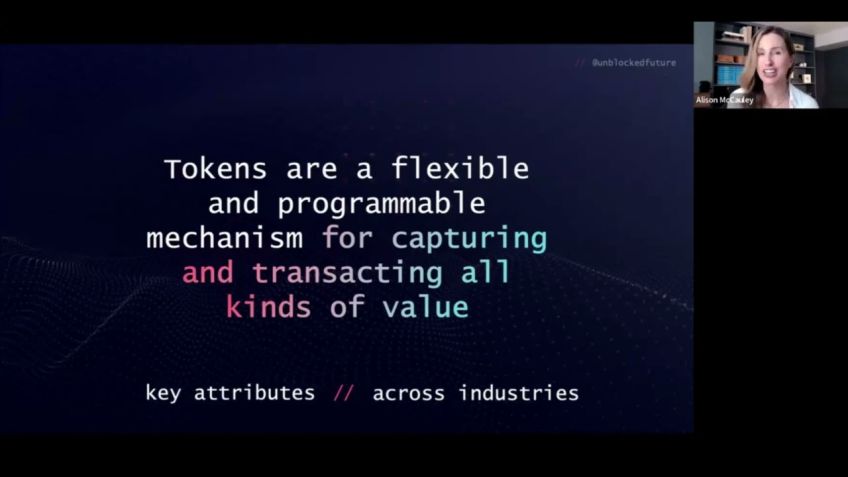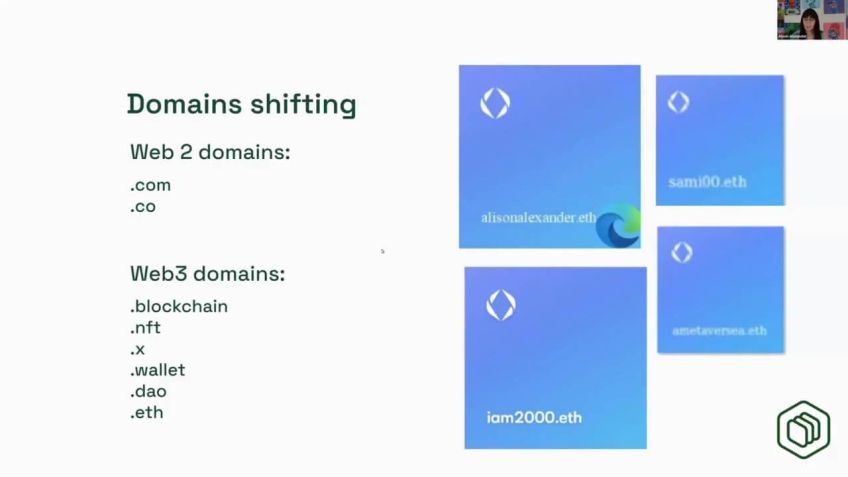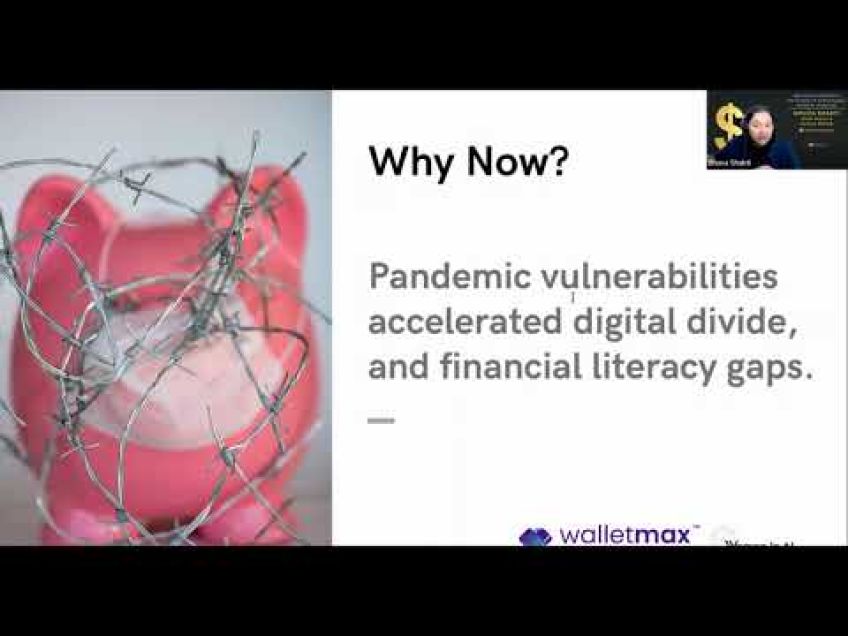Can Crypto Ever Be Green? by Zenobia Godschalk
Will Crypto Ever Be Green?
Welcome to our discussion on the hot topic of whether cryptocurrencies and blockchain technologies can ever be green. Joining us are experts from Swirls Labs, University College London, and Zenobia Godstalker, SVP of Communications at Swirls Labs, who specialize in driving the adoption of Hedera, a next generation distributed ledger.
Proof of Work vs Proof of Stake
The initial point of discussion revolves around the concept of consensus mechanisms, specifically Proof of Work (PoW) and Proof of Stake (PoS). PoW is computationally expensive by design, intended to keep the network secure; however, it is also energy-intensive and often associated with environmental harm. PoS, an alternate consensus mechanism adopted by many major networks, replaces computational power with wealth or "stake". A variant of PoS is used by Hedera, offering a different approach to selecting a leader based on stake.
Empirical Data Study: Proof of Stake Networks
A study conducted by UCL utilized empirical data to measure the energy consumption of different Proof of Stake networks. The key factors analyzed were the throughput of the network, the number of validating nodes, and the mining/validation machine used. It was found that Hedera performed well, as it boasted the most throughput per unit of energy consumption. Essentially, this proves that distributed ledger technologies can be green if alternative consensus mechanisms are implemented.
Blockchain and Sustainability
Unsurprisingly, companies are beginning to build sustainability projects on top of Hedera. For instance, an open source framework called the Guardian allows users to create auditable, publicly discoverable sustainability assets. A project from Australia focusing on transparency for water rights and mineral rights is another prime example of sustainability efforts.
Several companies are developing carbon marketplaces as well. Dou and Cripsy are pioneering proof of carbon projects, striving for a world where carbon credits can be effectively and transparently exchanged.
Summary
To summarize, we can confidently say that cryptocurrencies and blockchain technologies can be green. It's all about utilizing alternative consensus mechanisms, such as proof of stake, and understanding that energy consumption does not always equate to carbon emissions. Furthermore, adopting practices that benefit the environment, like the creation of carbon marketplaces, contribute greatly to a greener crypto world.
Video Transcription
Thank you everyone for joining us. Uh My name is Zenobia Gods Talk. I am the SVP of Communications at Swirls Labs and um Swirls Labs is dedicated to driving the adoption of Hadera which is a next generation distributed ledger.Uh My background is in information security as well as um cloud computing and distributed ledgers. And um I am very pleased to be joined by Java today.
Hi, thanks. Thanks Sylvia. Uh Java. You here. I am uh from University College London, from an academic background. Um I am a lecturer in financial computing and also program director of the uh Master Science in emerging digital technologies of the uh computer science department at the university.
So I teach Blockchain technologies as well as digital finance and machine learning at University College London UCL. I'm also affiliated with the university's Center for uh Blockchain technologies and the center focused on array of uh Blockchain related uh research as well as industry uh engagement.
So, yeah, and today we'll be talking about uh yeah, this, this, this hot topic will, will crypto ever be green.
Yes, I think you know, a lot of the discussion and the narrative around crypto has been how much energy it uses and how much energy it consumes. And I think Java, you know, um would love to hear your thoughts. I think there are some misconceptions in terms of, you know, it's a very technical concept in terms of how cryptocurrencies and the underlying blockchains that run them actually work. Um And you know, as I mentioned, Hedera is a next generation uh distributed ledger technology.
It does not use some called proof of work to um to, to run. So maybe if you can share with our audience a little bit about, you know, proof of work, proof of stake and this concept of consensus mechanisms, which are really how these networks come going to be written on to the network.
Sure sounds good. Yes, that's exactly what I wanted to say. So I believe when people talk about how crypto or Blockchain technologies can have a bad impact on, on, on climate change and and can be um uh carbon emission intensive so on so forth. What they're really talking about is by no means the generic uh digital ledger technologies uh themselves. But they are actually talking about specifically knowingly or unknowingly. Um the pretty much the Bitcoin proof of work consensus mechanism, which is actually by design computationally expensive, whether whether this can be green or not, we can, we can, we can take a look at that later. But uh yeah, the proof of work uh consensus mechanism is by design uh computationally expensive. It is actually a feature to keep the network secure. Um It is not uh a bug but nevertheless, um there are also a lot of other consensus uh mechanisms out there. And lately, a lot of major distributed distributed network, uh distributed ledger uh technology or DLT networks have adopted those alternative consists mechanisms. So most prominently as Zenobia has mentioned proof of stake, so instead of using uh kind of computational power to proxy the weight of the weight that a network participant or node would have in the network consensus, it uses stake or in another word, it's actually just the wealth that you hold within the network to, to proxy or to represent your um your, your, your, your weight in consensus.
And there are a lot of um different versions of proof of stake, delegated, proof of stake, pure proof of stake. Um So yeah, um and, and uh there are um also uses a type of uh uh uh uh proof of stake uh in their consensus um uh mechanism. And uh this is uh where instead of, instead of having a kind of a leader selected based on uh uh based on the uh stake um that they have proportionately. Um it is actually using this kind of um uh weighted average mechanism. So everybody's opinion will be counted uh in a round of consensus. But the, but the weight will be uh based on the, the the the amount of stake um or on a high level, the amount of stake each note would have. So this is just kind of another version of proof of stake. And this is uh vastly different from the proof of work me mechanism that we all know of. That's adopted by the Bitcoin uh network. Uh The proof of stake is much less um uh energy uh intensive comparative uh proof of work. So in that sense, um distributed technology, distribute ledger technologies can be green. Uh If you uh if you adopt the, the, the, the kind of the uh the alternative uh consensus mechanism. So that's, that's my take on this um on the, on the, on the as a first step.
So to say, we can have a deeper dive into this uh later on. Yeah.
Yeah. And I think, you know, most people know Bitcoin, it is obviously the dominant Cryptocurrency in the space. But it's, you know, it was designed to your point to say, and I, I, my Children look at me when I try to explain this and I say, you know, a bunch of people race to solve a math problem. And the first one to do it, you know, wins. And the rest of them have used all of this computational power. And, you know, 99 percent of that um get sort of thrown away because they don't actually get to write a network on a transaction on to the network because they weren't the first to solve that proof of work problem. Um So I think, you know, you're certainly seeing even, even older networks like Ethereum starting to make that move to proof of stake as they recognize that. Um, you know, hey, we need to, we need to make sure that we are. Um we are, uh you know, doing this in a thoughtful way that doesn't require huge amounts of energy for every single transaction. Um So I know you all did a study, you know, you then sort of broke that out and you said, OK, great.
Let's set aside proof of work. We know that that's, you know, that that was sort of the initial concept, but that newer ledgers are shifting away from that. Can you talk a little bit about the study that UCL did in terms of looking at then saying, OK, well, you know, let's recognize that proof of stake is a more cost effective and energy effective way to do things. What was sort of that next step in terms of the research?
Exactly. Yes. So actually you mentioned something that you explained to your daughter that we could also borrow. Uh when we talk about proof of stake, you mentioned that, you know, uh uh 99% of the energy will be wasted. A lot of people compute that's not a problem, but a lot of them, the, the, the, the stuff they compute will just be thrown away because they are not selected it as uh you know, as as a block proposer. So to say as as the next block builder. So with proof of stake, you also have different versions, as mentioned, different versions of proof of stake. And with some versions of proof of stake, you, you select a leader, you select a leader first or with some versions of proof of stake. Um AAA lot of a lot of all the, all the nodes will compute will, will, will validate and then they would uh they will propose a block and then among all the proposed blocks among all the proposed kind of the next version of the, of the ledger, one proposal will be selected. So in that sense, it actually has a similar problem with proof of work because everybody needs to do the computation and then only that single proposal will be selected uh to contribute to the consensus. Uh Whereas what Hedera is doing, as I mentioned, it's, it's a, it's a slightly different mechanism. They use the weighted average in that sense, everybody's opinion will be uh counted. That's very interesting.
So in that sense, you don't have the, you don't have that, that, that um uh that uh in that sense, well, you don't have kind of energy wasted when you compute, you don't compute for nothing, right? So, so all the, all the opinions will count, it's just the weight of count will be uh uh it's just the weight of the, of the opinion uh will depend on the stake that you have in the network. So, yeah, so we looked, we also um collected empirical data to kind of gauge the uh energy consumption of different proof of stake uh networks, including there, including uh for example, uh tel uh avalanche and, and so on and so forth. And what we were doing is that we look at the uh the, the, the uh the throughput uh of the network and we also look at number of nodes that are uh doing uh validation. Well, we call them validating nodes. And we also look at the um the, the uh mining or so to say the validating machine that we're using and use that we build a very simple mathematical model to uh to, to measure the um unique energy consumption of different proof of stake network. And I have to say congrats uh sno or Congrats on uh Hadera with our uh small study, we do see that um Hadera um as of today is is in the uh on top of the uh on top of the lead board, so to speak with, with regard to uh with regard to uh throughput per energy consumption.
So as in, you know, it has the most throughput per unit of energy consumption or reversely, it has the uh least energy consumption per unit of throughput and throughput is basically the amount of transactions that a network can process within a unit uh within a uh a unit of time.
So yeah, so if you're interested, maybe I can just put uh put the link of that study in the chat so that everybody can look up.
That would be great. And I think, you know, what we saw was, um you know, uh you all also looked at sort of comparison to things like the Visa network and um you know, it, I think you all calculated that it would take 74 swipes of your Visa card to one or you could do 74 swipes. Uh um Sorry, I'm gonna get this wrong uh 11 transaction on the Hadera Network. Um you know, was uh you could, you could swipe your Visa card uh 74 times basically like it was a or, or the opposite of that. Yeah. Yeah.
Yeah. No, that's right
on the network to equal one swipe. Yeah,
because, because Visa Net essentially, I guess, I guess with Visa Network it's uh um the comparison in some sense, the comparison is probably uh not so fair because again, the Visa network is, is not uh is not a distributed or decentralized network, it's still a centralized network.
So we have that. Um but uh maybe there's, there's a way to share screen like we can, we can just quickly look at this graph together.
I think if you,
you see it. Yeah. Yes. So we have throughput here on the X axis and then we have energy energy consumption here on the Y axis. So we, we have extrapolated the historical data. If you, if you, while you're talking about Visa Net, we can probably see it here even compared with Visa Net. Um So if, if we extrapolate the historical data and then have the throughput um uh aligned with Visa Net currently uh currently Hadera hasn't reached that throughput yet.
But again, that's, that's exactly because it is a distributed network as opposed to a centralized network. But I think it will uh soon reach that. But if, if it reaches that point, it will still have uh lower uh energy consumption uh with uh the same kind of level of throughput. Um So that's, that's, that's the uh little uh comparison study that we did comparing. Um yeah, a different proof of stake networks including polka dots card, uh Cardano Teos Al and uh and Hadera, of course, you see kind of overlapping areas, but in general uh yeah, era has been performing quite well. So yeah, so I guess that's another point where, you know, uh where we can demonstrate that crypto can certainly be green. And uh that's in terms of consensus mechanism. But uh um I guess on top of the layer one platform, um I just real quick. Yes. On top of the layer one platform, there's, there's so many other things that we could do to contribute to um to sustainability um uh in the, in the DLT space. So I know that Zenobia uh with um Hadera, a lot of applications are built actually on top of this layer one infrastructure that actually contribute to, to, to the um to the kind of the environmental sustainability aspects. Maybe you could just give us an overview on those applications.
Sure. Yeah. So I think, you know, the way that most people end up seeing this is in ESG initiatives, right? So when when I fly on Delta Airlines, they say, you know, thank you for flying on us. We have purchased carbon credits to make sure or you can choose to purchase carbon credits to make sure that your flight is carbon neutral. Um I think you are seeing that there are enhanced ESG reporting requirements now for public companies to report, you know, is there overall footprint, carbon neutral and that that is a wonderful first step, but there are some challenges that we are seeing in terms of being people being able to accurately report that um there is, you know, a lack of granularity in some of that emissions accounting.
Um There is some complexity around those environments and then probably the biggest challenge that we are seeing is the double spend problem. So if I am a farmer and I plant a tree, you know, how do I, how do I as the person buying those carbon credits then know that that person has not, you know, sold that the that tree to someone else or sold those um carbon offsets to someone else. So I think that we're starting to see distributed ledgers play a very nice role in being able to track that and have accountability there. And of course, if that is the premise of your business, if you're saying I'm trying to create a carbon marketplace where I have transparency um for these credits, you can't build it on something that's using a huge amount of energy, right? That, that just seems um uh there's some uh some issues with, with doing that. So you want to build it on a ledger that is carbon neutral or carbon negative and where the cost of doing those transactions to the environment is very small. Um So we are seeing sustainability projects starting to be built on top of Hadera. Um There is an open source framework called the guardian which allows users to create these auditable um publicly discoverable sustainability assets.
And there has been an uh uh quite a bit of work done from the IW A the Inner work alliance. Um They have a sustainability business working group and within that group, there is an ecological markets task force that has helped to develop this open source framework for how do you recognize carbon credits? How do you um you know, make sure that they are auditable all throughout their life cycle? And how do you put those in a public ledger so that anybody can contribute to them and then, you know, people can recognize, well, gosh, you know, I wanted to buy that tree. Um But, you know, someone, another company has already sort of laid claim to it. So um that we don't have that double spend problem. Um We're seeing a number of applications being built on top of Hadera in this space probably in part because the network is so green to run. Um If you look actually out of Australia, there are a number of projects that are being done um through Queensland government and others. Um They are looking at uh sustainability solutions for things like water rights and mineral rights.
So, um you know, you will hear a company called Civic Ledger, they talk a lot about the fact that water should be a basic human, right? And everybody should have access to it. Um But you also have the challenge of um you know, of almost the prisoner's dilemma, right? If you are a company and you need water to run your business, you're not necessarily going to scale back on your water usage. Um You know, because it's, it's the right thing to do for the greater good. So how do you track those kinds of assets um that are, you know, are uh public assets that need to be um recognized for ESG purposes. Um We also see companies um trying to create these types of carbon marketplaces. Um We have companies like Cripsy and Dou who are rolling out um you know, proof of carbon projects. I think the biggest challenge that those companies are seeing right now is just being able to find the um the actual assets. So Dou told us that as they opened up their carbon marketplace, they actually sold out of carbon credits within the first week. Um Now that's a good problem to have, right, that will sort of force additional um supply if, if you can demonstrate to farmers and others that gosh look, you know, there is a valuable marketplace for these, there is a simple way for you to be able to share them with the world and you know, then economically supply and demand will dictate what the price of those carbon credits will be.
Um So those are some of the exciting projects that are being built on top of Hadera and it is an open source platform. So we are seeing um you know, we are seeing standards being developed on top of it, we are seeing working groups being developed on top of it. Um There is an arm with the H BAR Foundation that is giving grants to projects that are focused on ESG initiatives and sustainability. So there is a lovely ecosystem that is developing. Um When you realize there is a way to deliver this transparency and um this accountability on top of a um carbon and negative network
Yeah, thanks. So maybe it would help if you also share some links there because I'm going to do so because I, I'm really excited about what you said with regard to, you know, having a carbon marketplace on the DLT network. Actually a few years back, um we did a study on carbon trading with Blockchain as well. And also a lot of actually new ins uh that we see uh with the rise of DLT technologies can actually be applied to increase, to enhance the efficiency of of carbon trading and such as the automated market making algorithms and so on and so forth that that would ensure continuous liquidity uh when uh when there's uh uh carbon credit uh uh exchange transactions.
So we have that um as well. Um Yeah, that's, that's with the, also the innovation uh that we see with the Decentralized Finance Network. I think we are running a little bit out of time. But do you think we should just get some other points covered or?
Yeah. So I think um I have just opened up the Q and A. So maybe if we um I do want to be respectful of time, but if anybody has questions, we can certainly stay to answer them. And then um like you said, we will put these links in the chat so that us folks would like to learn more. Um They certainly can do that
sounds good while we are waiting for Q and A, I just want to add one more point because I said we want to uh get into that uh at the beginning of the session, which is uh which is um the fact that um uh computational uh expensiveness is not always equivalent to uh carbon emission.
Um As a matter of fact, um there are a lot of um um industry uh industry innovations out there that use actually renew energy to mine Bitcoin or there is um in the industry, this kind of vertical integration where miners and renewable energy companies actually are the same. And when you have a problem with energy storage, uh instead of uh instead of wastefully just uh um uh dispose of that of that energy, which you cannot uh store, which would in turn uh increase carbon uh emission, you can actually use that uh to, to, to, to mine Bitcoin. So, so again, uh like I said, uh even with proof of work, which a lot of people think is connected to uh a negative impact on climate change, it's not always necessarily true as well because uh again, yeah, energy consumption does not necessarily mean carbon emission. That's a great point what we wanted to say at the point.
Well, and I think, you know, a lot of folks in the industry are looking at these different ways that, you know, can, can the industry contribute to finding and developing new greener sources of energy. So I think that benefits us all. Um I think we uh we have some comments in the chat, but I don't think we have uh any additional questions in the Q and A so we can probably wrap up. Um I will um I do see a question in terms of security threats. Um in terms of concerns with Hadera. Hadera is the only network that is um A BFT Asynchronous Byzantine fault tolerant. Um I will also post in the chat. Um Some of those uh there's a, a research paper um in terms of A BFT is uh sort of the, the highest standard in terms of um Byzantine Paul tolerance. So of course, we certainly work with, um you know, we work with uh sort of folks who review the code, the code is open source. Um We work with uh value programs, but I think um in terms in terms of network compromise and sort of people being able to attack the network, like you've seen happen recently with other um with other networks that is not a concern because of the A BFT properties of the network.
Um So thank you for that question. I've shared that paper um or that link, that's a brief summary and there's more details in terms of the security, um you know, attributes of Hedera um following from that link.
Thanks everybody for joining. And if you have a good one, yes, if you have further questions, I think you can find our contact details, so just drop a line. Thank you very much
and thank you. Thank you.
Bye. Thank you.





